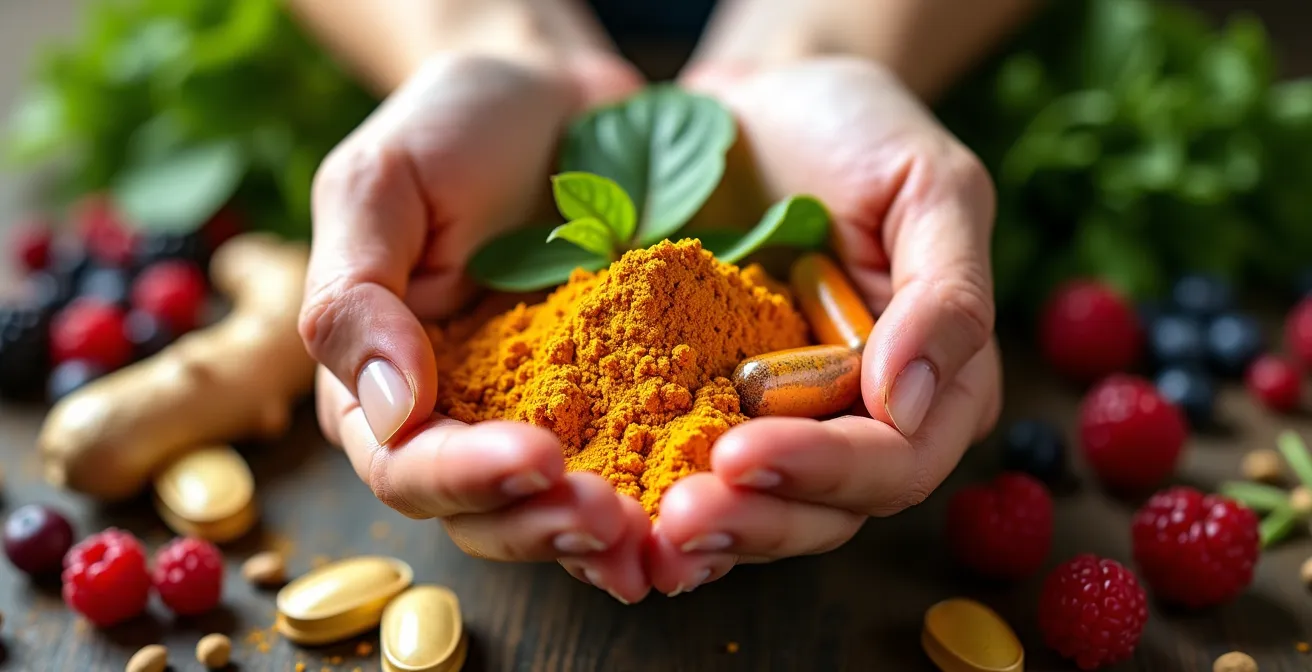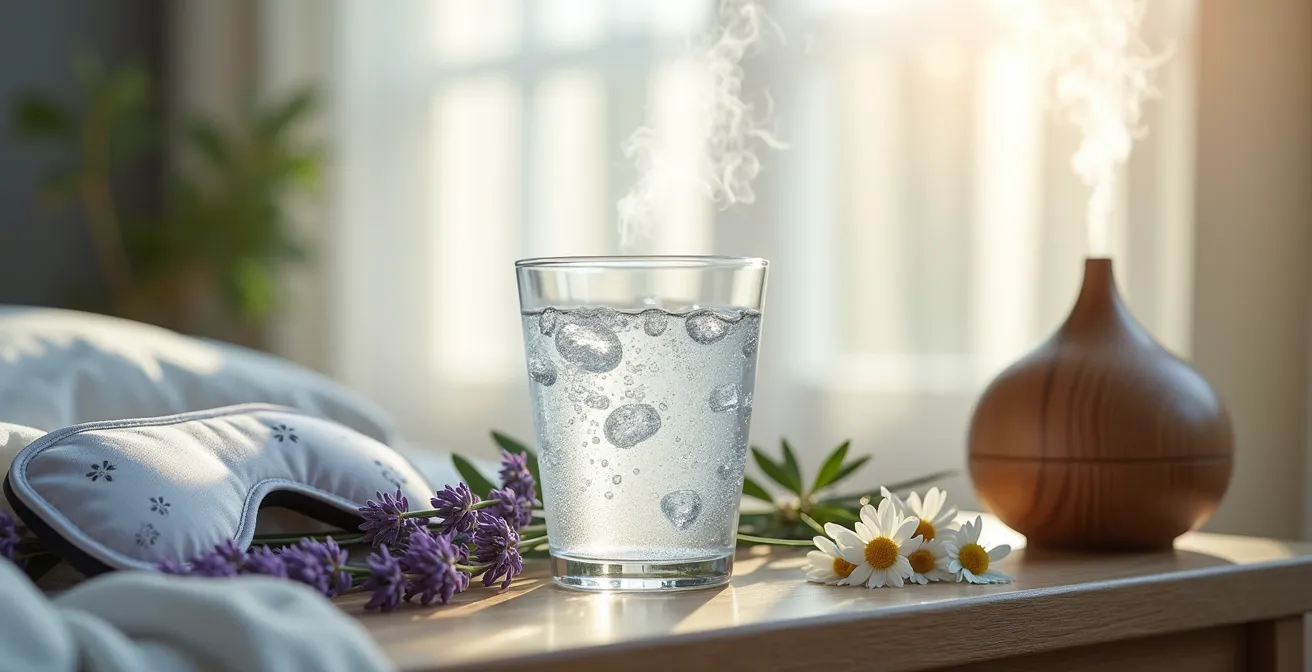
Navigating the world of joint health often leads to a familiar list of advice: take a supplement, try gentle exercise, and eat “healthy.” While well-intentioned, this surface-level approach misses the profound, interconnected systems that truly govern our articular resilience. Lasting joint comfort isn’t found in a single pill or activity but in a holistic strategy that addresses the hidden drivers of inflammation and discomfort.
This deeper understanding reveals that factors like gut microbiome balance, restorative sleep, and stress management are not peripheral but central to joint vitality. By nurturing these foundational pillars, you can move beyond merely managing symptoms and begin building a more resilient internal ecosystem. For those seeking targeted support, a comprehensive approach where supplements like GCA 2700, indicated for articular well-being, play a role within this broader strategy is often most effective.
Your Blueprint for Articular Health
- Discover the gut-joint axis and how your microbiome directly influences inflammation.
- Learn why hydration and deep sleep are non-negotiable for cartilage repair and recovery.
- Understand the biochemical link between chronic stress and increased joint pain.
- Develop a personalized and synergistic supplement strategy that goes beyond the basics.
The gut-joint axis: Nurturing your inner ecosystem for articular well-being
Emerging science is revealing a powerful connection once thought improbable: the state of your gut directly influences the health of your joints. This communication network, known as the gut-joint axis, operates through the microbiome. An imbalanced gut environment, or dysbiosis, can lead to increased intestinal permeability (“leaky gut”), allowing inflammatory molecules to enter the bloodstream and trigger systemic inflammation that manifests in the joints.
Conversely, a thriving and diverse gut microbiome helps regulate the immune system and keep inflammation in check. Supporting this inner ecosystem involves more than just digestion; it’s a primary strategy for managing articular well-being. This can be achieved by focusing on dietary patterns that foster beneficial bacteria and reduce inflammatory triggers, effectively soothing your joints from the inside out.
What is the gut-joint axis?
The gut-joint axis is the biochemical communication pathway between gut bacteria and joint tissues. An unhealthy microbiome can trigger systemic inflammation, directly contributing to joint pain and degradation.
Probiotics Supplementation for Osteoarthritis
A double-blind clinical trial with 136 knee osteoarthritis patients found that 12 weeks of multistrain probiotic supplementation (Vivomix 112 billion) significantly reduced pain intensity, disease severity, and WOMAC scores while improving balance and handgrip strength. The study revealed that probiotics reduced postural imbalance partly due to decreased intestinal leakiness, establishing a clear gut-joint connection.
This perspective is reinforced by modern research that is shifting the understanding of osteoarthritis from a purely mechanical condition to one with significant metabolic underpinnings. This opens exciting new avenues for treatment that focus on internal health. As highlighted by analysis from Technology Networks, this focus on the gut-joint axis offers potentially new possibilities for arthritis research and patient care.
5 Steps to a Joint-Friendly Gut
- Include probiotic-rich foods like yogurt, kefir, and fermented vegetables daily.
- Consume prebiotic foods such as garlic, onions, and Jerusalem artichokes to feed beneficial gut bacteria.
- Implement anti-inflammatory dietary patterns with omega-3 rich foods and colorful vegetables.
- Avoid processed foods, excess sugar, and refined carbohydrates that promote gut dysbiosis.
- Consider elimination diets to identify food sensitivities that may trigger joint inflammation.
Beyond lubrication: The crucial role of hydration and restorative sleep in joint recovery
While often overlooked, water and sleep are two of the most potent natural tools for joint maintenance. Proper hydration is fundamental, as synovial fluid, which lubricates the joints, is primarily composed of water. More importantly, cartilage, the connective tissue that cushions your bones, needs water to maintain its structure and function. In fact, healthy cartilage is remarkably water-rich.
When you are dehydrated, your body may pull water from cartilage and other tissues, reducing lubrication and increasing friction. It’s a simple equation: well-hydrated joints are better cushioned and more resilient. The water composition in joint cartilage can be as high as 80%, highlighting its critical role in shock absorption and nutrient delivery.
To enhance your daily intake, consider adding lemon, cucumber, or mint to your water for a natural flavor boost, or incorporating herbal teas like chamomile and ginger into your routine. These not only hydrate but also offer mild anti-inflammatory benefits.

Just as crucial is the role of restorative sleep. During the deep stages of sleep, the body undertakes its most important repair work. This is when the pituitary gland releases growth hormone, which is essential for repairing and regenerating tissues, including the collagen matrix within your cartilage and ligaments.
During deep sleep, our bodies enter a state of repair, which is crucial for maintaining overall health. Growth hormone, which plays a pivotal role in tissue growth and muscle repair, is released. This hormone helps in regenerating cells and repairing tissues, including those in our joints.
– Regenerative Joint Clinics Research Team, The Importance Of Sleep In Joint Recovery And Overall Health
Improving sleep hygiene is therefore a direct investment in your joint health. This includes creating a dark, cool, and quiet sleep environment, avoiding screens before bed, and establishing a consistent sleep-wake cycle. Each stage of sleep plays a distinct role, but the deep, non-REM stages are where the most significant physical restoration occurs.
| Sleep Stage | Duration (%) | Joint Recovery Function |
|---|---|---|
| NREM Stage 1-2 | 50-60% | Shallow rest, memory consolidation |
| NREM Stage 3-4 | 15-25% | Growth hormone secretion, tissue regeneration |
| REM Sleep | 20-25% | Emotional regulation, neural recovery |
Decoding the stress-inflammation link for joint resilience
The mind-body connection is not a vague concept; it is a tangible biochemical reality, especially concerning joint health. Chronic stress acts as a potent catalyst for systemic inflammation. When you are persistently stressed, your body releases a cascade of hormones, including cortisol, which in the short term can suppress inflammation. However, chronic elevation of cortisol leads to hormonal resistance and a pro-inflammatory state that can directly impact your joints.
This physiological pathway helps explain why periods of high stress often coincide with flare-ups in joint pain and stiffness. The psychological burden of living with joint discomfort can also create a vicious cycle, where pain increases stress, and stress, in turn, amplifies pain. In fact, studies show a significant overlap between arthritis and mental health conditions, with the prevalence of anxiety in people with rheumatoid arthritis being up to 20%.
To break this cycle, integrating mind-body techniques into your daily routine is essential. Practices like meditation, deep breathing exercises, and mindfulness are not just for relaxation; they are tools that actively down-regulate the body’s stress response and reduce the production of inflammatory markers.

These practices work by activating the parasympathetic nervous system, often called the “rest and digest” system, which counteracts the “fight or flight” response. By calming the nervous system, you can directly lower the inflammatory tide that contributes to joint degradation and discomfort, building greater resilience against both physical and emotional stressors.
Curating your natural supplement strategy: Synergy, purity, and personalization
While foundational lifestyle habits are paramount, a well-curated supplement strategy can provide targeted support for joint structure and function. The key is to move beyond a one-size-fits-all approach and focus on synergy, purity, and personalization. Certain compounds work better together, creating a combined effect that is greater than the sum of their parts.
For instance, botanicals like Turmeric (Curcumin) and Boswellia Serrata are powerful anti-inflammatories that work on different inflammatory pathways. When used in combination, they can offer comprehensive relief. Other compounds like Glucosamine and Chondroitin provide the raw materials for cartilage repair, while MSM delivers sulfur, a vital component of connective tissue.
Research shows combining Boswellia and turmeric may deliver better results than either supplement alone. One study showed a formula with both herbs decreased posture-related back pain by 56% in just one week. By day 15, participants experienced an impressive 98.5% reduction in pain.
– Jinfiniti Precision Medicine Research Team, Boswellia vs. Turmeric: Differences, Benefits and Risks
Beyond these well-known options, emerging compounds like Avocado/Soybean Unsaponifiables (ASU), Palmitoylethanolamide (PEA), and SAMe are gaining scientific attention for their unique mechanisms in reducing pain and supporting cartilage. The effectiveness of any supplement, however, depends heavily on its quality and purity.
| Supplement | Primary Mechanism | Evidence Level | Typical Dosage |
|---|---|---|---|
| Turmeric/Curcumin | COX-2, NF-κB inhibition | Strong | 500-1000mg daily |
| Boswellia Serrata | 5-LOX pathway inhibition | Strong | 300-500mg daily |
| Glucosamine/Chondroitin | Cartilage building blocks | Mixed | 1500mg/800mg daily |
| MSM | Anti-inflammatory sulfur | Moderate | 1000-3000mg daily |
Navigating the supplement market requires careful attention to detail. Choosing products with third-party verification and standardized extracts ensures you receive a potent and clean product. It is always crucial to consult with a healthcare professional before beginning any new supplement regimen to ensure it aligns with your specific health needs and any existing medications.
How to Select High-Quality Supplements
- Look for third-party testing certifications like USP Verified or ConsumerLab approval.
- Choose standardized extracts with guaranteed potency (e.g., 95% curcuminoids, AKBA in Boswellia).
- Consider bioavailability enhancers like piperine with curcumin or lipid-based delivery systems.
- Start with single ingredients to assess individual tolerance before trying combinations.
- Consult healthcare providers, especially if taking medications or having existing health conditions.
- Allow 4-8 weeks of consistent use to evaluate effectiveness before making changes.
Key Takeaways
- True joint health is a holistic system connecting your gut, sleep, stress levels, and nutrition.
- A balanced gut microbiome is a frontline defense against systemic inflammation that affects joints.
- Deep sleep and proper hydration are fundamental for the daily repair and lubrication of cartilage.
- Managing stress with mind-body techniques can directly reduce inflammatory hormones and pain perception.
Foundational pillars for joint vitality: Integrating movement, nutrition, and posture
Ultimately, a resilient articular system is built upon the daily pillars of intelligent movement, anti-inflammatory nutrition, and conscious posture. The goal of exercise is not to push through pain but to nourish the joints by promoting circulation, strengthening supporting muscles, and enhancing flexibility. Low-impact activities are ideal as they minimize stress while delivering maximum benefits.
These exercises improve the flow of synovial fluid, which delivers oxygen and nutrients to cartilage. Strong muscles around the joints act like natural braces, absorbing shock and reducing the load on the joints themselves. Consistency is more important than intensity when it comes to movement for joint vitality.
| Exercise Type | Joint Impact Level | Primary Benefits | Recommended Duration |
|---|---|---|---|
| Swimming | Minimal | Full-body movement, buoyancy support | 20-30 minutes |
| Stationary Cycling | Low | Cardiovascular fitness, leg strength | 10-20 minutes |
| Walking | Low | Weight-bearing, accessible | 5-10 minutes initially |
| Water Aerobics | Minimal | Resistance training, joint support | 30-45 minutes |
This physical foundation is powerfully supported by an anti-inflammatory diet. Foods rich in omega-3 fatty acids, antioxidants, and vital phytonutrients help to quell inflammation at a cellular level. For example, aiming for a daily fish oil intake of 600-1000mg from sources like salmon and sardines can significantly reduce stiffness and pain.
Anti-inflammatory Diet Implementation
- Include fatty fish like salmon, sardines, or mackerel 2-3 times per week for EPA and DHA.
- Add dark leafy greens rich in vitamin K and calcium to daily meals.
- Incorporate colorful berries and antioxidant-rich fruits to combat oxidative stress.
- Use anti-inflammatory spices like turmeric, ginger, and garlic in cooking.
- Choose healthy fats from nuts, seeds, and olive oil while avoiding processed oils.
- Limit sugar, refined carbohydrates, and processed foods that promote inflammation.
Finally, the biomechanical forces of daily posture play a continuous role in joint health. As experts from Centennial Joint Care point out, proper alignment ensures that strain is distributed evenly across muscles and ligaments rather than concentrating on vulnerable joints. By consciously standing, sitting, and moving with good posture, you are actively engaged in maintaining overall joint health and preventing the cumulative wear and tear that leads to long-term issues.
For more on proactive health strategies, you can Explore other prevention topics.
Frequently Asked Questions on Joint Health
How does stress directly affect my joints?
Stress triggers the release of cortisol and other stress hormones that increase inflammation, disrupt the immune system balance, and can worsen arthritis symptoms by causing the immune system to attack joints more aggressively.
Can mindfulness meditation really help with joint pain?
Yes, research shows mindfulness meditation can significantly reduce pain perception, lower inflammatory markers, and help break the cycle of negative thinking that can worsen pain experiences.
What are the best stress management techniques for joint health?
Effective techniques include mindfulness-based stress reduction (MBSR), regular gentle exercise, deep breathing exercises, adequate sleep, and maintaining social connections to reduce stress-induced inflammation.
Why is hydration so important for my joints?
Hydration is critical because joint cartilage is composed of up to 80% water. Adequate water intake ensures proper joint lubrication through synovial fluid and maintains the cushioning and shock-absorbing properties of cartilage, reducing friction and wear.